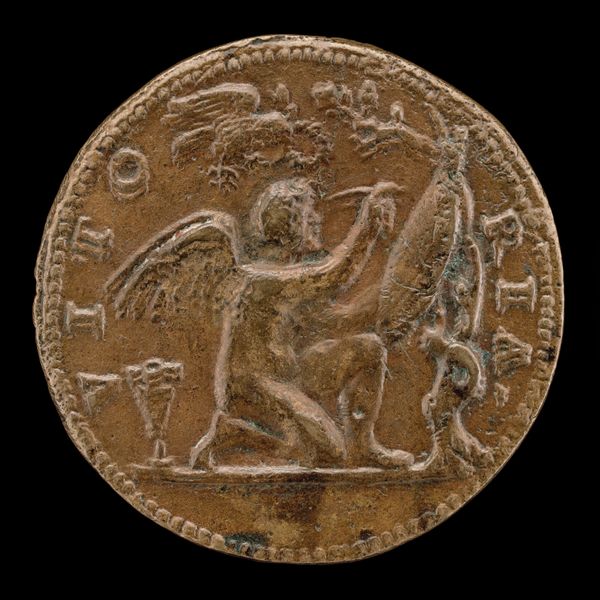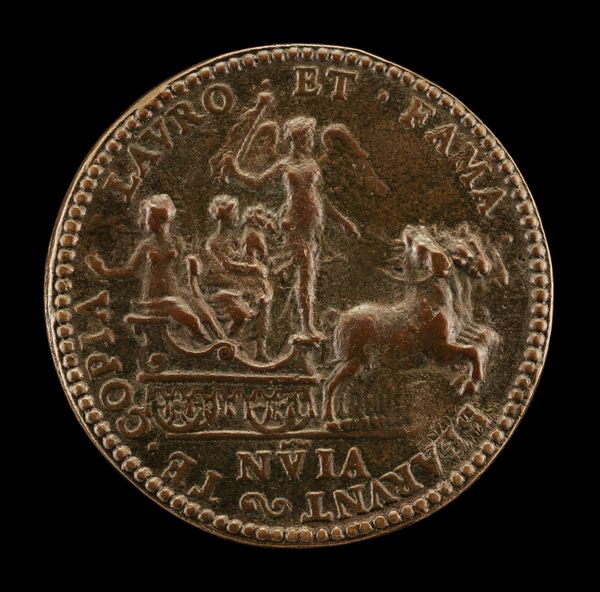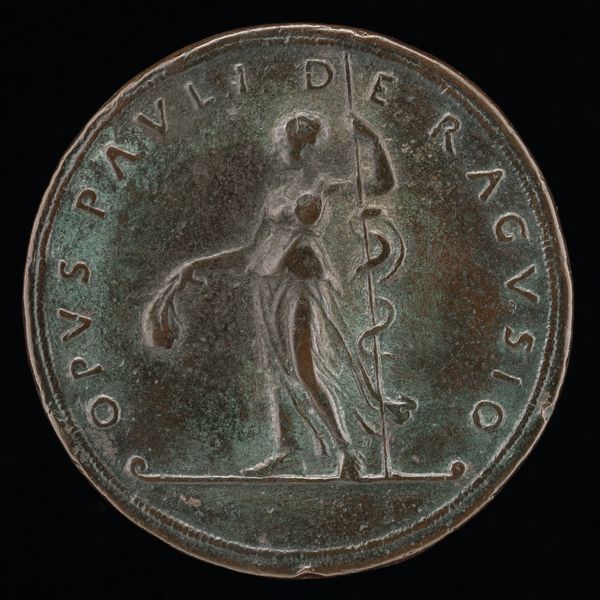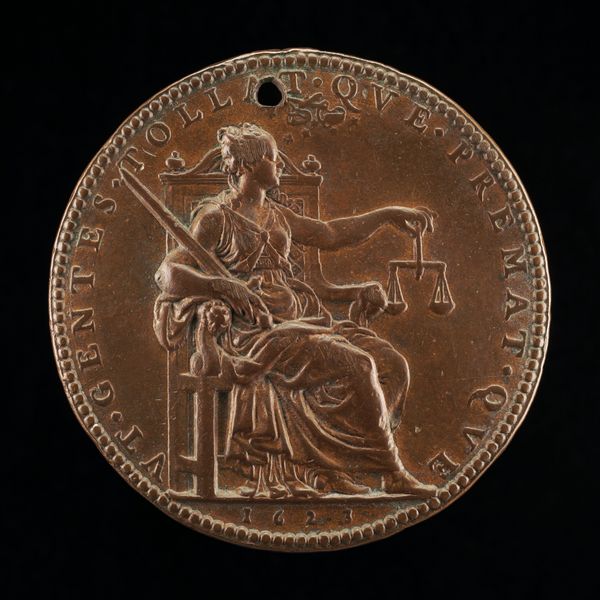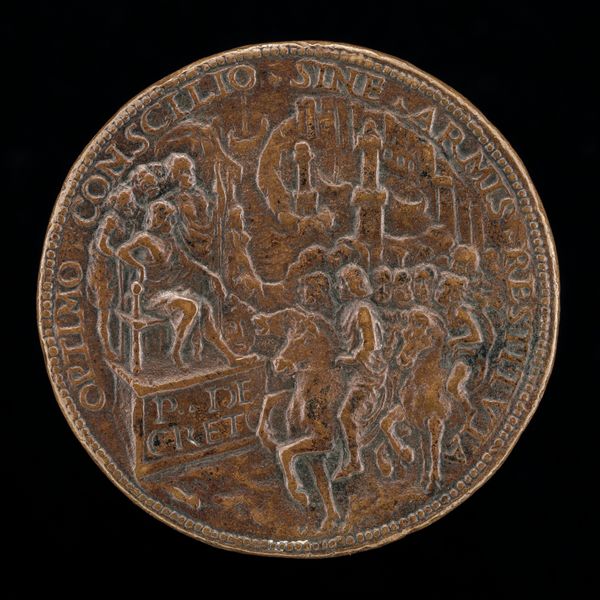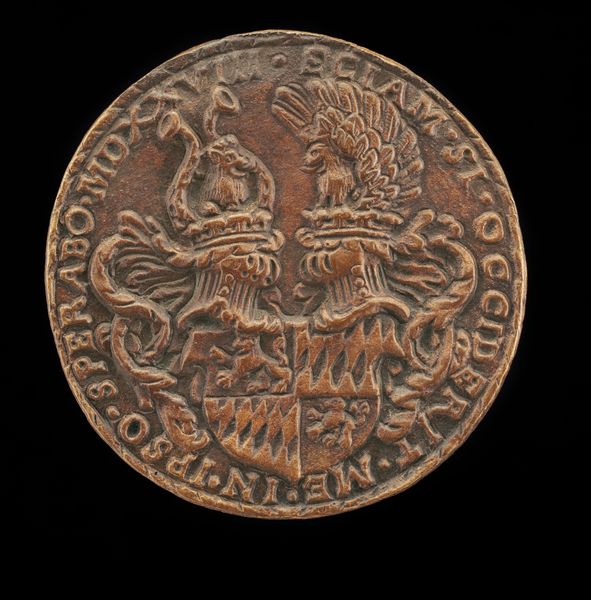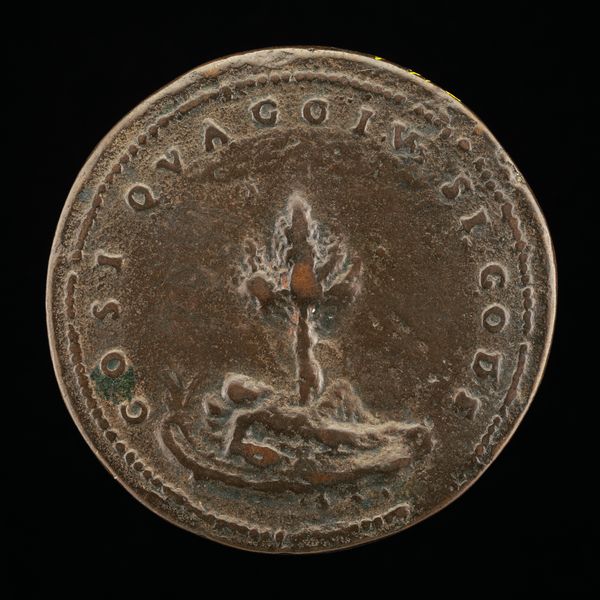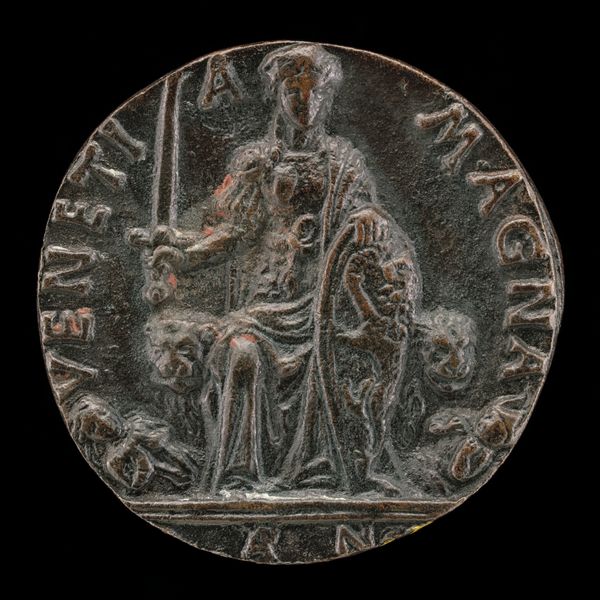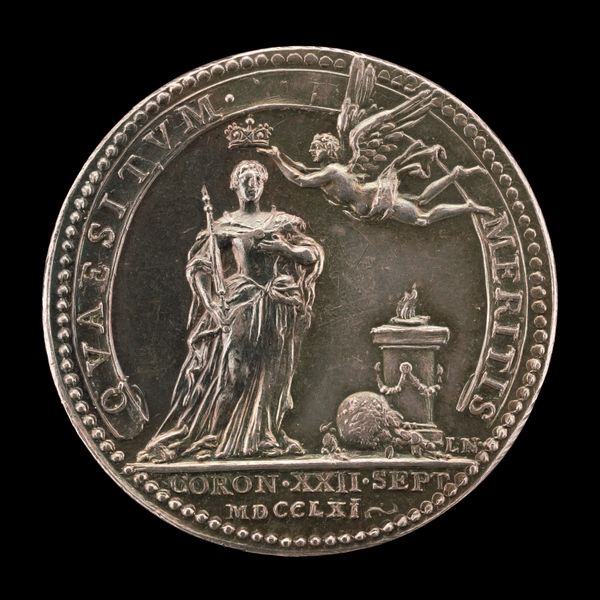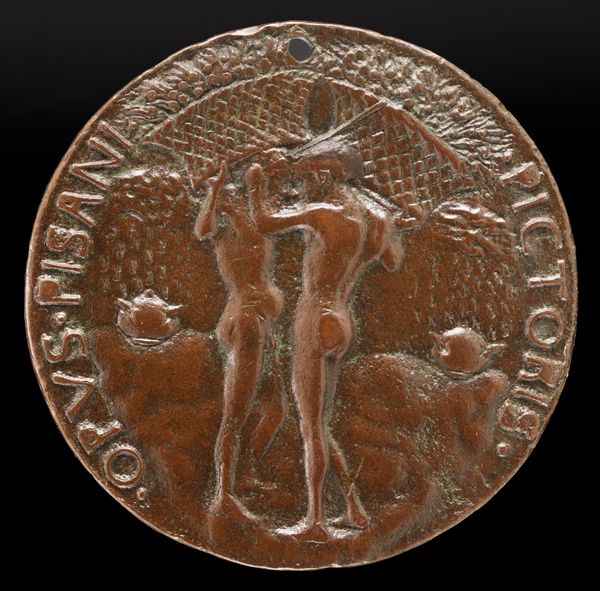![Apollo Pursuing Daphne [reverse] by Medalist R.C.](/_next/image?url=https%3A%2F%2Fd2w8kbdekdi1gv.cloudfront.net%2FeyJidWNrZXQiOiAiYXJ0ZXJhLWltYWdlcy1idWNrZXQiLCAia2V5IjogImFydHdvcmtzLzQ5NGQzYTY5LTFkMzktNDU4Yy1iZDhkLWQ2ZmQ1ZGRkOGNmYy80OTRkM2E2OS0xZDM5LTQ1OGMtYmQ4ZC1kNmZkNWRkZDhjZmNfZnVsbC5qcGciLCAiZWRpdHMiOiB7InJlc2l6ZSI6IHsid2lkdGgiOiAxOTIwLCAiaGVpZ2h0IjogMTkyMCwgImZpdCI6ICJpbnNpZGUifX19&w=3840&q=75)
relief, bronze, sculpture
#
medal
#
sculpture
#
relief
#
bronze
#
mannerism
#
figuration
#
sculpture
#
history-painting
Dimensions: overall (diameter): 4.59 cm (1 13/16 in.) gross weight: 34.53 gr (0.076 lb.) axis: 12:00
Copyright: National Gallery of Art: CC0 1.0
Curator: At first glance, this bronze relief depicting Apollo pursuing Daphne presents as dynamic, despite its small, almost intimate scale. The figures seem to burst forth from the surface. Editor: The sculpture, created in 1556 by the medalist R.C., presents a rich subject for considering themes of transformation and resistance, particularly in a patriarchal context. Daphne's metamorphosis from woman to laurel tree becomes a powerful visual metaphor for female agency. Curator: I'm intrigued by the artist's choice of bronze as a material, often associated with permanence and monumentality, yet here used for something so small, so easily held in the hand. This suggests a tension between the desire to immortalize a moment and the ephemerality of the artistic object itself, perhaps reflecting the precarious status of craft production in relation to art in the 16th century. Editor: Absolutely. The choice to portray a scene from Ovid's Metamorphoses adds another layer, doesn’t it? The poem's focus on change and re-invention speaks volumes about social fluidity during the Renaissance, questioning fixed identities and exploring alternatives in a society grappling with nascent concepts of individualism. Daphne's flight is not just personal, but a symbol for broader anxieties concerning societal boundaries. Curator: And considering the technical skill required to cast such intricate details in bronze, we must ask, who was the audience for such works? Medals like these often served as markers of status, distributed amongst an elite network for social signaling. Did R.C. perhaps draw attention to Daphne's class or standing through the skillful craft and refinement visible on this bronze medium? Editor: That's perceptive. One also wonders about R.C.’s own place within this network of power. Whose interests might he have served or challenged through the telling, or rather retelling, of this myth? Did R.C. intentionally use the story to advocate for change? The composition itself feels rather unbalanced, Apollo centered on the left chasing Daphne, seemingly crowding the edge, possibly implying underlying anxieties. Curator: These observations encourage us to remember the multiple layers of production present in the crafting of such artwork. From the mining and processing of the metal to the conceptualisation and sculpting process, and eventual dissemination, all reflect the labour, resources, and networks of exchange intertwined within artistic creation. Editor: Yes, viewing “Apollo Pursuing Daphne” reminds us that even seemingly self-contained artworks like this medal resonate within and actively contribute to broader, enduring conversations about power, transformation, and the negotiation of identity across time. Curator: A tangible reminder that art exists not in a vacuum, but as a product of its complex making and materials. Editor: Precisely, each choice made—medium, subject, style—contributes to an unfolding dialogue that continues to this day.
Comments
No comments
Be the first to comment and join the conversation on the ultimate creative platform.
